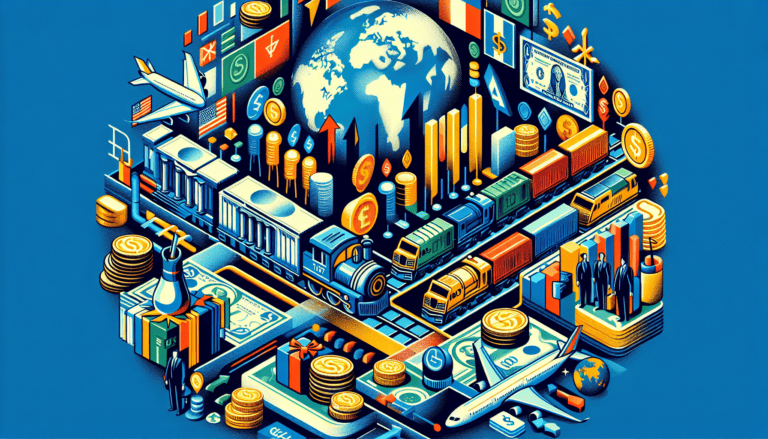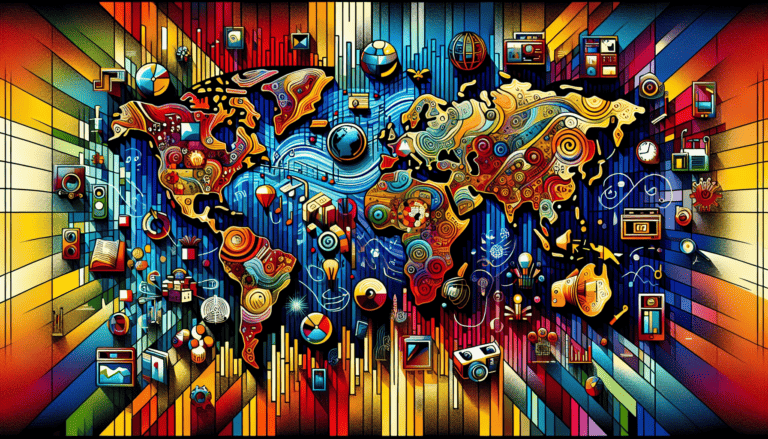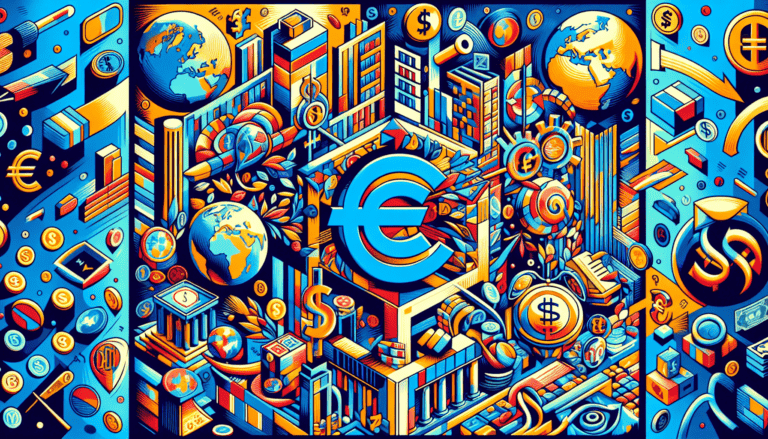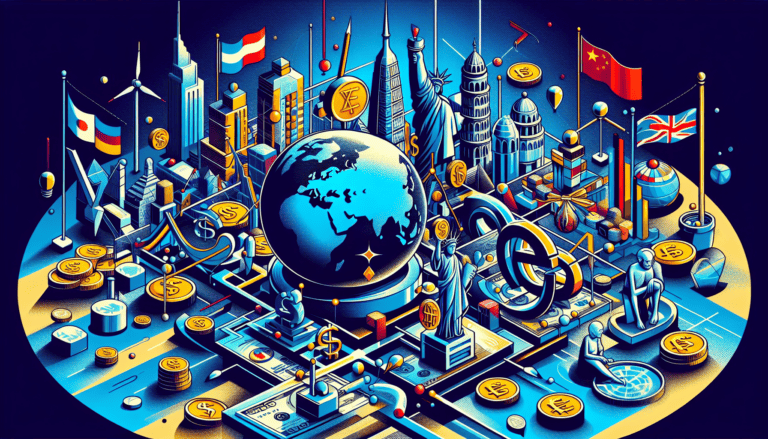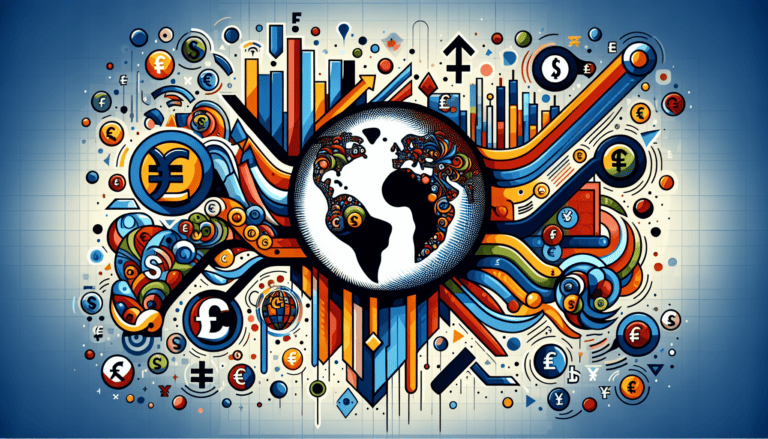Mastering the Art of Global Commodities Trading: A Beginners Guide

Introduction to Commodities Trading
The world of finance offers a multitude of investment avenues, and global commodities trading stands as a dynamic segment that attracts investors and traders from around the world. With the ability to trade a diverse range of raw materials, understanding the fundamentals of commodities trading is crucial for any beginner investor wanting to navigate this sphere effectively.
Basics of Commodities
Commodities refer to raw materials or primary agricultural products that can be bought and sold. Trading in commodities involves the exchange of these physical goods, with the aim of capitalizing on fluctuations in their market prices. These trades can occur directly in the spot market, where commodities are exchanged for immediate delivery, or in the futures market, where contracts are set for future delivery at predetermined prices. The latter allows individuals and businesses to hedge against potential market volatility (Investopedia).
Types of Commodities
Commodities are broadly categorized into two main types: hard and soft commodities. Hard commodities include natural resources that are mined or extracted, such as gold, silver, oil, and natural gas. Soft commodities, on the other hand, are typically agricultural products or livestock, like wheat, corn, coffee, sugar, and pork bellies.
Here’s a basic outline of commodity types, which can be further explored in the context of global trading:
| Hard Commodities | Soft Commodities |
|---|---|
| Gold | Wheat |
| Silver | Corn |
| Crude Oil | Coffee |
| Natural Gas | Sugar |
Trading in these commodities is facilitated by major global exchanges and involves various instruments such as futures contracts, options, Contract for Differences (CFDs), and certificate programs (Investopedia). Understanding these financial instruments is essential for anyone interested in cross-border investment strategies and international portfolio diversification.
For those looking to dive deeper into the intricacies of financial markets, resources covering overview of global financial markets, emerging markets: opportunities and challenges, and global regulatory frameworks and compliance offer valuable insights into the complex world of international trading and finance.
Players in Commodities Markets
In the realm of global commodities trading, two main types of market participants play pivotal roles: hedgers and speculators. Both groups are essential for the liquidity and proper functioning of the market, albeit with different objectives.
Role of Hedgers
Hedgers are market participants who interact with the commodities market primarily to manage and mitigate the risks associated with price fluctuations. They engage in commodities trading to protect their financial interests from potential losses due to volatile commodity prices. Hedgers typically include producers, consumers, and intermediaries directly involved with the underlying commodity.
For instance, a farmer growing wheat might use futures contracts to lock in a selling price for the next harvest, thereby ensuring a stable income despite market uncertainties. Similarly, a bakery business might purchase those contracts to secure a consistent wheat price, protecting itself from potential spikes in the wheat market.
| Hedger Type | Purpose |
|---|---|
| Producer | Lock in a selling price |
| Consumer | Secure a purchase price |
| Intermediary | Stabilize cost or revenue |
These market players utilize various financial instruments like futures contracts or other derivatives to set prices in advance, which provides them with a predictable cost or revenue stream (Investopedia). Hedging strategies are a critical component of cross-border investment strategies and international portfolio diversification, ensuring businesses and investors can operate with greater financial stability.
Role of Speculators
Contrary to hedgers, speculators are individuals or entities that seek to earn profits from price movements in the commodities market without a direct stake in the physical assets. They take positions based on their analyses of market trends, supply and demand dynamics, economic reports, and geopolitical events, all of which may influence commodity prices.
Speculators are the market movers who provide the necessary liquidity and facilitate the discovery of fair market prices. They willingly assume the risk that hedgers try to avoid, betting on future price directions. For example, a speculator might buy oil futures contracts anticipating a price increase due to geopolitical tensions in oil-producing regions.
Their role is critical as they assume the risk that hedgers are trying to offload, hence supporting the smooth operation of the commodities markets. Speculators contribute to the essential market mechanisms that drive the international trade and finance landscape.
Both hedgers and speculators are integral to the commodities markets, providing balance through their different strategies. Hedgers seek stability and predictability, while speculators thrive on volatility and risk. Understanding these roles and the strategies they employ is a fundamental aspect of mastering global commodities trading and navigating the broader global financial markets.
Trading Commodities Globally
Global commodities trading refers to the buying and selling of raw primary products on regulated exchanges across the world. This section will explore the major global exchanges where these transactions occur and the various methods by which commodities are traded.
Major Global Exchanges
The epicenters of global commodities trading are a few key exchanges that dominate the market. According to Investopedia, the four main commodity exchanges include:
- The Chicago Mercantile Exchange (CME)
- The Intercontinental Exchange (ICE)
- The Multi Commodity Exchange of India (MCX)
- The London Metal Exchange (LME)
Each exchange specializes in different types of commodities and offers a unique set of financial instruments for trading. For instance, CME is known for energy and metals, while LME is renowned for non-ferrous metals. These exchanges play a crucial role in price setting and risk management in the global commodities markets. For a comprehensive overview of global financial markets, including commodities exchanges, investors can enhance their understanding of where and how commodities are traded.
Trading Methods Explored
When it comes to trading methods, investors have several options at their disposal. Global commodities trading can be conducted through:
- Futures contracts
- Contracts for Difference (CFDs)
- Certificate programs
Futures contracts and spot trading are the two primary forms of commodities trading. The spot market entails the direct exchange of commodities for immediate delivery. In contrast, the futures market deals with contracts for future delivery, which offers investors a way to hedge against price volatility (Investopedia).
| Trading Method | Description |
|---|---|
| Spot Trading | Immediate delivery of commodities |
| Futures Trading | Contracts for future delivery to hedge against price volatility |
The active commodities markets in the United States, Europe, and Asia reflect the global nature of these trades. The US is particularly influential in the trading of oil and natural gas. Investors looking to diversify their portfolios can consider international portfolio diversification through commodities trading. This can help to spread risk and potentially capitalize on the unique opportunities presented by different markets.
Understanding the mechanisms and venues for global commodities trading is fundamental for investors who are new to this sector. By familiarizing themselves with the major exchanges and trading methods, individuals can begin to navigate the complex world of commodities with greater confidence. Additionally, staying informed about global economic indicators and their impact on commodities prices can further aid investors in making strategic decisions.
Factors Influencing Commodities Prices
The volatile nature of commodities prices can be attributed to a myriad of factors that range from economic to environmental. Understanding these factors is essential for anyone involved in global commodities trading, as they can affect investment decisions and potential returns.
Economic and Geopolitical Events
Economic and geopolitical events are powerful drivers of commodity prices. These events can lead to significant fluctuations in the markets, impacting the balance of supply and demand. For example, geopolitical situations in regions that are key producers of commodities, such as the conflict between Russia and Ukraine in February 2022, can heavily impact prices due to disruptions in production and exportation, affecting global markets Plus500.
Additionally, a country’s economic growth can directly affect commodity prices, especially if the country is a major consumer or producer of the commodity. Issues such as economic instability, lack of investment, and corruption can lead to a decline in production and exports, contributing to price fluctuations on a global scale. For insights on how these events influence cross-border investment strategies and international trade and finance, readers may explore our related articles.
Supply and Demand Dynamics
The price of commodities is heavily influenced by the relationship between supply and demand. When demand increases or supply decreases, prices tend to rise. Conversely, prices generally fall when demand decreases or supply grows. The pandemic-induced lockdowns in 2020 serve as a case study, where the demand for gasoline plummeted, leading to a dramatic decrease in oil prices, with WTI dropping to as low as $18 a barrel on April 20th, 2020 Plus500.
An understanding of supply and demand dynamics is crucial for those looking to engage in global commodities trading, as these factors can dictate market trends and investment opportunities. Our section on global economic indicators and their impact provides further exploration of these concepts.
Weather and Natural Disasters
Weather patterns and natural disasters can have immediate and profound effects on commodity prices. This is particularly true for agricultural commodities, where adverse weather conditions can lead to crop failures and supply shortages. For instance, droughts and frost in Brazil during April of 2021 resulted in significant spikes in the prices of coffee and corn due to reduced production Plus500.
Investors in commodities markets must remain vigilant to weather forecasts and natural occurrences that could impact the commodities they trade. The ability to anticipate and respond to these events can be a critical aspect of successful trading. For a deeper dive into managing these types of risks, our article on managing risks in commodities trading offers additional guidance.
Understanding the factors that influence commodities prices is key for those looking to master the art of global commodities trading. These factors can vary in their impact and frequency, but they all play a role in shaping the global financial landscape. Whether through direct involvement in trading or strategic portfolio management, recognizing the interplay of these elements can help beginner investors make more informed decisions.
Managing Risks in Commodities Trading
Engaging in global commodities trading can be a lucrative venture, but it comes with its own set of risks. To navigate the volatile commodities markets successfully, traders must employ strategies that manage and mitigate these risks. Two primary tools for risk management in this arena are futures contracts and options, and diversification along with strategic planning.
Futures Contracts and Options
Futures contracts are agreements to buy or sell a specific quantity of a commodity at a predetermined price at a future date. They are particularly useful for hedging risks, as they allow traders to lock in prices, which can be invaluable for industries like agriculture, energy, and mining that are prone to fluctuating prices. Futures contracts provide stability and predictability for both producers and consumers of commodities (Investopedia).
Options trading, on the other hand, gives investors the right but not the obligation to buy (call option) or sell (put option) a particular commodity at a set price within a specific timeframe. This type of trading offers more flexibility than futures contracts, as it provides the trader with the opportunity to capitalize on market opportunities while limiting potential losses. Options can be used both for hedging and for speculative purposes, offering a range of strategic possibilities (Investopedia).
Diversification and Strategic Planning
Diversification is a key strategy in managing investment risk. By spreading investments across various commodities and asset classes, traders can reduce the impact of a downturn in any single market on their overall portfolio. Strategic diversification requires an understanding of the correlations between different commodities and asset classes, and how they are likely to react to different economic events (The Hindu Business Line).
Strategic planning in commodities trading involves a thorough analysis of the factors that influence commodity prices, such as supply and demand dynamics, economic indicators, and geopolitical events. A well-crafted strategy takes into consideration the long-term objectives and risk tolerance of the investor or trading entity, and includes a plan for adjusting the portfolio in response to market changes. Staying informed through resources such as an overview of global financial markets and global economic indicators and their impact can provide traders with the insights necessary for strategic planning.
Incorporating both futures and options into a diversified trading strategy can help manage the inherent risks associated with global commodities trading. By understanding and utilizing these tools, beginner investors can better position themselves to navigate the complexities of the commodity markets and work towards achieving their financial goals. For further insights on building a diverse international portfolio, readers can explore international portfolio diversification.
The Impact of Geopolitics on Trading
The intricate web of international relations and geopolitics plays an influential role in shaping the landscape of global commodities trading. Geopolitical events can significantly impact the flow of commodities and introduce volatility to the markets. Understanding these influences is vital for beginner investors looking to navigate the complex global financial markets.
Shifting Alliances and Trade Patterns
Global commodities trading is sensitive to the ebb and flow of geopolitical alliances. For instance, the evolving relationship between countries like Russia and China can lead to a reshuffling of trade patterns, with a profound effect on commodities markets (IMF). As alliances shift, commodities traders may find previous routes and partners no longer viable, compelling them to seek new markets or adjust their strategies. This realignment often leads to uncertainties in supply chains and necessitates a reassessment of risk management strategies, especially for those involved in cross-border investment strategies.
For investors, these geopolitical shifts can signal both risk and opportunity. Monitoring changing alliances and trade agreements can provide insights into emerging markets and potential areas for growth. However, the unpredictability of these changes also underscores the importance of international portfolio diversification to mitigate potential risks associated with any single region or commodity.
Protectionism and Trade Barriers
In response to geopolitical conflicts, there has been a noticeable trend towards economic nationalism and protectionism. These protectionist measures include tariffs, trade barriers, and other restrictions that can inhibit the free flow of goods across borders. The trend towards de-globalization, as highlighted by the IMF, indicates reduced trade openness and a potential unwinding of the integration seen in previous decades (IMF). This environment has directly impacted global commodities trading, creating challenges that traders and investors must navigate.
In the face of rising trade barriers, commodities traders are prompted to reevaluate their global supply chains and seek alternative partners and routes. This reevaluation often focuses on diversifying trading partners to mitigate the impact of such disruptions on the continuity and profitability of commodities trading.
| Geopolitical Factor | Impact on Commodities Trading |
|---|---|
| Shifting Alliances | Reassessment of trade partners and routes |
| Protectionism | Challenges to trade openness and increased costs |
Understanding the implications of protectionism and trade barriers is essential for those engaging in international trade and finance. Traders must be adept at identifying and adapting to changing regulations, tariffs, and trade agreements to maintain competitive advantages in the global arena.
Geopolitical dynamics play a significant role in global commodities trading, influencing everything from supply chains to strategic decision-making. Beginner investors must recognize the importance of staying informed on global economic indicators and their impact, as well as understanding the intricacies of global regulatory frameworks and compliance. By doing so, they can make informed decisions, manage risks effectively, and capitalize on the opportunities presented by the ever-changing geopolitical landscape.
Sustainability and ESG in Trading
The trading world is increasingly acknowledging the importance of sustainability and incorporating Environmental, Social, and Governance (ESG) considerations into investment decisions. This shift is reshaping the landscape of global commodities trading and is driven by a range of factors, including consumer preferences, regulatory pressures, and the investment community’s demand for greater transparency and ethical practices.
The Rise of Sustainable Trading Practices
Sustainable trading practices are becoming more prevalent in global commodities trading. Investors and traders are now more mindful of the environmental impact and ethical implications of their investment choices. This trend is in response to a growing awareness of climate change, environmental degradation, and social issues. Regulatory bodies across the globe are also implementing stricter guidelines that promote sustainable practices in trading.
The incorporation of ESG criteria allows traders and investors to evaluate commodities not just on financial returns but also on their broader impact. Such practices encourage investment in commodities that contribute to sustainable development, such as renewable energy sources or sustainably sourced agricultural products.
For more information on how these practices are shaping the industry, refer to our article on sustainable and responsible investing across borders.
ESG Factors in Investment Decisions
The integration of ESG factors into investment decisions has become a critical component of global commodities trading. ESG criteria encompass a range of concerns, including:
- Environmental: How does the production, processing, and distribution of a commodity affect the environment? Are there measures in place to minimize carbon footprint and environmental degradation?
- Social: What are the working conditions like in the industry producing the commodity? Are there fair labor practices, and are human rights being respected?
- Governance: How transparent and ethical are the company’s operations? Is there a risk of corruption or poor management that could affect the commodity’s value?
Investors are increasingly using these criteria to screen potential investments and to influence their trading decisions. The focus on ESG factors is not merely a matter of ethics but also a consideration of long-term profitability and risk management. Investments that fail to consider ESG factors may face risks from regulatory changes, consumer backlash, or resource scarcity.
For a deeper understanding of how ESG factors play a role in financial markets, explore our content on global regulatory frameworks and compliance and the impact of geopolitical events on global markets.
The rise of sustainable trading practices and the incorporation of ESG factors in investment decisions are reshaping global commodities trading. By prioritizing these considerations, traders and investors can contribute to a more sustainable future while potentially enhancing their financial returns and managing risk in a more comprehensive manner.
